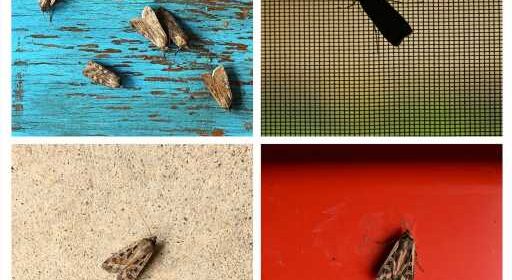Millions of miller moths are migrating – not a nuisance, ecologists say, though non-native invaders may eat your lawn

Once reviled widely as a nuisance, the millions of miller moths migrating through cities along Colorado’s Front Range this week increasingly are seen as an ecological necessity.
These native moths matter more than ever, entomologists say, because other pollinators, such as bees, are decreasing — which imperils native vegetation and potentially billions of dollars worth of agricultural food crops.
The miller moths (Euxoa auxiliaris) come from Army cutworms, which turn into adult moths on the Eastern Plains before swarming into metro Denver and other urban areas. If not distracted by household and commercial light, each moth typically flies up to 100 miles, moving on into mountain foothills before July.
They’re crucial food for birds, arriving just as newly-hatched chicks need protein. They become a major food source for bears foraging after emerging, hungry, from hibernation. And fuzzy moth bodies pick up and carry pollen from one flower to another, helping native plants survive.
“Pollinators as a whole are trending toward declines, so we should learn how to share our space and welcome miller moths as they pass through,” said Shiran Hershcovich, a manager at the Colorado Butterfly Pavilion, an insect research hub. “Be mindful of your light pollution levels and turn off all unnecessary lights this spring.”
But, in recent years, a different kind of moth — a non-native invader — has been complicating the spring scene and intensifying the buffeting of people inside warm and robustly-lit homes. This European Large Yellow Underwing (Noctua pronuba) comes from caterpillar worms that favor non-native turf lawns and can hang around longer than the native miller moths.
“It may become an issue in the future,” said Colorado State University entomologist Chuck Harp, a researcher based at CSU’s Museum of Arthropod Diversity.
The invaders arrived accidentally from Europe at a port in Nova Scotia in 1979, then spread across the continent, first appearing in Colorado about two decades ago. They reproduce rapidly with multiple broods and are becoming a dominant moth from May until September. The problem: Their worms in turf lawn grass eat ravenously, similar to invasive Japanese beetles, Harp said.
“Their caterpillars are large enough to do damage to gardens,” he said. “This moth can be the most common moth all season… Our yards have non-native plants, and they attract scores of species of non-native insects that feed on them.”
Miller moths are harmless. They don’t carry disease, insect scientists say. They cannot sting or bite, though they’ve developed a defense mechanism called “rectal loading,” and when in distress, can ooze a bitter brown liquid.
Colorado lawmakers have mobilized to try to slow the decline of pollinators in general. Gov. Jared Polis on Wednesday signed into law a pollinator protection bill that limits the use of toxic neonicotinoid pesticides.
It’s unclear whether the number of moths this spring will exceed what was thought to be an intense migration last year. CSU researchers said cold snaps in May, such as those in 2017 and 2019 that included snowstorms, reduce numbers.
Birds benefit from abundant moths.
“Swifts and swallows can be seen at highway intersections swooping to catch these moths as the moths fly out from under cars as they sit at the signal lights,” Harp said.
Moths often rest in the warmth under vehicles and fly off at stoplights — toward birds.
Moths navigate by the sun, moon, and starlight.
When they get to cities and homes, they sense warmth and artificial light, which confuses them.
“We humans have changed their landscape… and they hang around longer than they otherwise would or should,” Hershcovich said. “Our artificial lights blur their built-in navigation system and, instead of following their usual path, they find our homes. When you keep bright lights on throughout the night in your homes and on porches, you’ll likely attract a couple dozen friendly miller moths trying to fly through their ancestral migratory path.”
Get more Colorado news by signing up for our daily Your Morning Dozen email newsletter.
Source: Read Full Article
